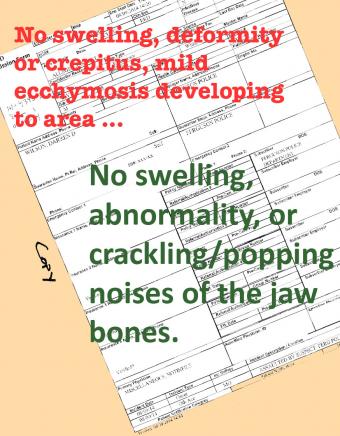PROVIDENCE, R.I. [Brown University] — To advance public understanding, a new website produced by nine students at the Alpert Medical School of Brown University translates into everyday language the medical jargon in more than 60 pages of evidence considered by the grand jury that declined to indict former Ferguson, Mo., police officer Darren Wilson in the shooting death of Michael Brown.
Rian Yalamanchili, a leader of “The Ferguson Decoded Project,” said the team became inspired to demystify the terminology in Michael Brown’s autopsy and Wilson’s medical examination after seeing the raw evidence laid out in an NPR blog post Nov. 25, 2014.
“We felt like this was a place where we could use what we’ve learned so far to assist society in this very important debate across the nation,” Yalamanchili said. “A lot of the terminology used in the documents is very complex. It felt rather unjust that even though this was made publicly accessible, it was still clouded in all this jargon and terminology.”
The team worked through Thanksgiving and the first two weekends of December to produce the site, including an internal peer-review and advising by Brown University faculty members with knowledge of medical forensics, human pathology, and structural disparities in healthcare.
Two examples
- Original (from Wilson’s physical exam): “Right mid mandible and mid maxillary region with mild palpable pain; no swelling, deformity or crepitus, mild ecchymosis developing to area, no palpable pain to bilateral TMJ and full ROM to TMJ.”
Translation: “Right jaw: Mild pain on the right side of the jaw, specifically around the middle and upper areas. No swelling, abnormality, or crackling/popping noises of the jaw bones. Mild bruising. No pain at the jaw joint. Fully able to move jaw.”
- Original from medical examiner autopsy report (describing gunshot wound to the head): “The track of this bullet has been traced to pass via the scalp, soft tissue, parietal bone of the skull, right parietal lobe of the brain, right temporal lobe of the brain, right temporal bone of the skull to rest within the soft tissue of the lateral right face.”
Translation: “The bullet passed through the scalp, the upper back side of the skull (parietal bone), the right side of the brain (from the parietal lobe to the temporal lobe), the right side of the skull (right temporal bone), and stopped in the right side of the face.”
Yalamanchili said he and his fellow students strived to provide neutral translations without any analysis or commentary. He does acknowledge that like many people, he and many classmates have been “baffled” about the lack of indictments in the Ferguson case and that of Eric Garner, who was choked to death when New York City police took him into custody.
Yalamanchili, who is currently conducting research in the Dominican Republic, has studied racial and ethnic health disparities during his medical education.
But Yalamanchili said he hopes that whatever opinion people may hold, the straightforward medical translations he and his fellow students provide will make the Ferguson evidence easier to interpret. He said he also hopes the group’s efforts will inspire others with different expertise — for instance in criminal justice or law — to demystify the nonmedical portions of the voluminous evidence.
“By releasing this to the public, we hope to inspire students from all backgrounds,” Yalamanchili said. “If they could use their knowledge to do something similar to this to help the public really tease through everything, summarize it in a way that’s approachable, it would be wonderful.”
There is more to any case than just the medical reports, noted Dr. Elizabeth Laposata, clinical associate professor of pathology and laboratory medicine, a forensic pathology expert, and one of the team’s faculty advisers.
“The medicolegal autopsy is one of the cornerstones of a thorough death investigation,” she said. “Documentation of detailed, objective findings on the body are integrated with other findings from the death scene investigation and crime laboratory analyses. The facts gathered by all these scientific and medical investigations then provide the basis to understand the sequence of events leading up to, causing, and following the death of an individual.
“Certain scenarios can be supported or refuted by the scientific evidence. It is important to remember, however, that regardless of how detailed and exhaustive the investigation, the evidence may remain silent and not be able to provide an answer for every question.”
In addition to Yalamanchili, other students involved are Gina Chen, Hyunwoo June Choo, Damilola Idowu, Kira Neel, Laura Ucik, Rebecca Slotkin, Tiffany Chambers, and John R. Williams. In addition to Laposata, the team’s faculty advisers include Lundy Braun, professor of medical sciences and Africana studies.

